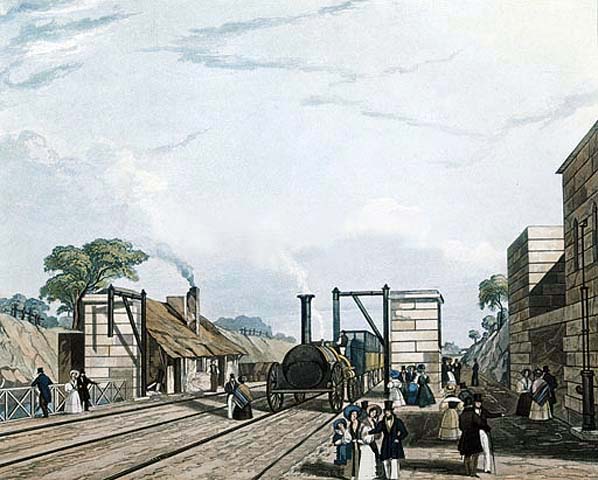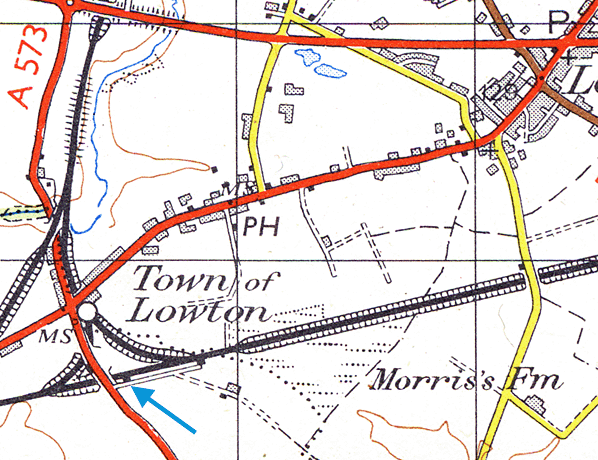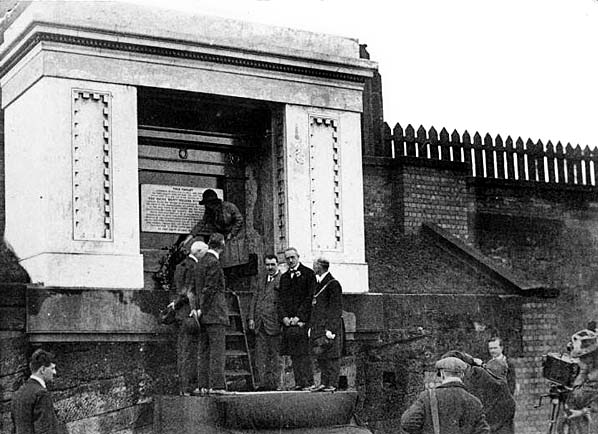|
Notes: Parkside was one of the original passenger stations
of the famous Liverpool
and Manchester Railway the world's first railway to cater
for passengers as one of its primary functions. It was also
arguably the worlds first inter city railway. When the line
first opened on the 15th September 1830 no details exist of
the initial intermediate stops and Walkers accurate description
of the line at the time of opening says that fares for intermediate
stops had not been settled implying that initially there might
not have been any stops.
The earliest known company timetable is 1st March 1831, this
did not show times at intermediate stops but did list stops
in fare tables. The company minutes of 26th September 1832 did
give a full list but no further list was given until January
1846.
There were many early changes of stopping place and name so
the early history of intermediate stops is patchy. At first
trains stops at, for example, level crossings where the gatekeeper
issued tickets; perhaps a room in his cottage was available
as a shelter. Many of the stations consisted of little more
than a basic cottage. In 1841 platforms and nameboards were
added to stations lacking them.
When the line opened Parkside was chosen as a location for watering
facilities being that it was located about equal distance between
the two Lancashire cities. It was at Parkside during the lines
opening ceremony that the MP William Huskisson was killed by
a train hauled by 'The Rocket' as he had alighted from his train
and had walked down the track to speak to the Duke of Wellington
who was traveling on another train. A memorial was erected close
to the spot of the accident which can still be seen today.
In 1832 a line from Wigan (The Wigan Branch Railway) joined
the LMR at Parkside. Running east to north the junction allowed
trains from Manchester to proceed directly from the LMR towards
Wigan. Those from the Liverpool direction had to reverse. This
added to Parkside's importance. On 4.7.1837 The Grand Junction
Railway (GJR) which connected to the LMR a couple of miles to
the west of Parkside opened. This line connected the LMR to
Birmingham. In 1838 the Wigan Branch Railway was doubled and
extended to Preston. All of this development which added to
the importance of Parkside led to the LMR the GJR and the Northern
Union Railway (NUR), which owned the Wigan Junction line, to
build a new station at Parkside. It opened in 1839 and the original
station closed.
The 1949 Ordnance Survey map shows the new station opened in
1839 but it also still shows the original station as a 'luggage
station' indicating that the original station remained in use
for luggage.
Click here
for a detailed history of the Edge Hill cutting and tunnels,
including pictures inside the 1829 Crown Street Tunnel
Further reading: Liverpool & Manchester Railway Operations
1831 - 1845 by Thomas J Donaghy
David & Charles 1972 ISBN 0 71535705 0
To see the other
closed stations on the Liverpool & Manchester Railway click
on the station name: Liverpool
Crown Street, Huyton
Quarry, Lea Green,
Collins Green,
Parkside 2nd, Kenyon
Junction, Glazebury
and Bury Lane, Flow
Moss, Astley, Lambs
Cottage, Barton
Moss 1st, Barton
Moss 2nd, Weaste,
Seedley, Cross
Lane, Ordsall
Lane, Manchester
Liverpool Road |








 Home Page
Home Page 

